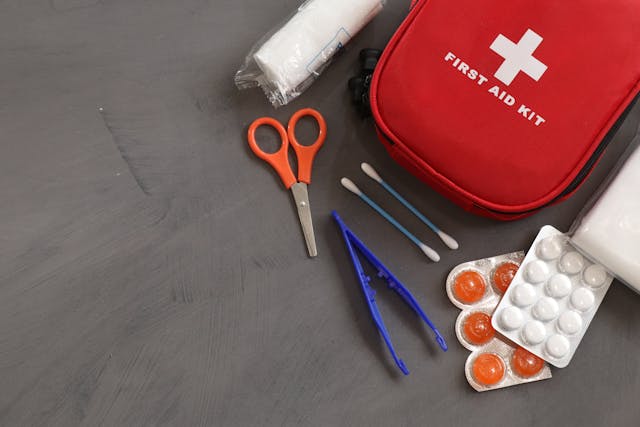If you have a well-stocked First Aid Kit, you can deal with many injuries and emergency situations, and even save a life. If you’re unfamiliar with first aid treatment, you might not know what to put in your first aid kit. A first aid kit should include different things that help to treat (temporarily) any wound or injury on the spot.
The knowledge to properly use a first aid kit can help you feel confident and calm in an emergency. Check out the guide below that makes you understand how to use them.
10 Most Useful And Essential Aid Kit Items
First-aid kits are available at many drugstores or you can assemble your own. Your kit should include the following items:
1. Gauze Pads
There is a type of bandage called roller gauze available in the medical field that facilitates wound healing and protects the skin from trauma.
2. Finger Protect Cots
When it comes to finger protection, finger cots are designed to meet the needs of a wide range of sectors and applications. They are made from natural rubber latex and are designed to be comfortable and flexible, while also providing adequate protection against cuts and scratches.
3. Disposable Gloves
By using disposable gloves, responders create a barrier between themselves and the patient, which prevents the spread of germs between them. This helps reduce the risk of infection and helps to protect the patient’s health. Disposable gloves are also useful for any direct contact with bodily fluids, such as blood, to reduce the risk of spreading infection.
4. Ibuprofen
When you are experiencing any type of aches and pains, such as headaches or nausea, you may find that a bottle of pain relievers such as aspirin or ibuprofen can come in handy. It is important to read the labels and follow the instructions carefully.
5. Thermometer
There is no doubt that having a thermometer at hand in case of catching a bug or having a temperature is important. Thermometers are easy to use and provide accurate readings quickly. They are essential for monitoring fever and determining the severity of the illness. Having a thermometer at home can help to detect any changes quickly and take appropriate action.
6. Triangular Bandages
These triangular bandages are usually used by wilderness medicine practitioners for slinging injured limbs, swathing them, and wrapping wounds in a triangular shape.
7. Instant Cold Compress
In many outdoor injury situations, an instant cold pack will prove to be a valuable asset to help out. This is because it is one of the most basic forms of treatment. An instant cold press can help to stop the bleeding on the spot.
8. Medical Tape & Scissors
Taping over bandages or coverings on wounds can be used to keep them in place, ensuring the wounds heal as quickly as possible by keeping them in place. This can help in recovering the wound quickly and securely.
9. Antiseptic Solution
Cleaning wounds with an antiseptic solution or using wipes before dressing them with an antiseptic product is recommended. This helps to reduce the risk of infection. Also, it is important to keep wounds clean and dry to reduce the risk of infection.
10. Antibiotic Ointment
Many small cuts can be treated with an antibiotic. Therefore, a small bag of antibiotic ointment should be kept on hand to treat those minor scrapes and scratches. Having an antibiotic ointment can help you protect yourself from spreading germs and other dangerous bacteria around the skin.
Conclusion
Make sure your first-aid kits are in proper working order and replace supplies that have expired or exhausted regularly. You should inspect your kit at least once a year, and check it for damage. Make sure to restock any items you may have used. Also, keep a list of items in your kit so you know what you have and what you need to add. You can even prepare a separate aid, especially for children for medical emergencies. Though, it is also very important to understand and learn how to use first-aid items, give lessons to your children on how to use first-aid items such as bandages and antiseptics.
